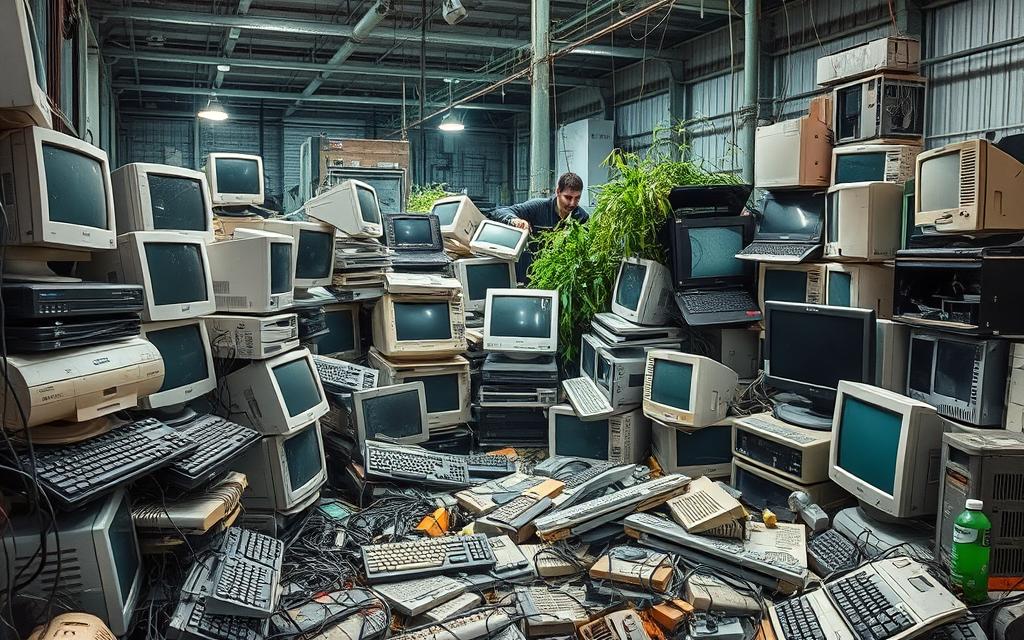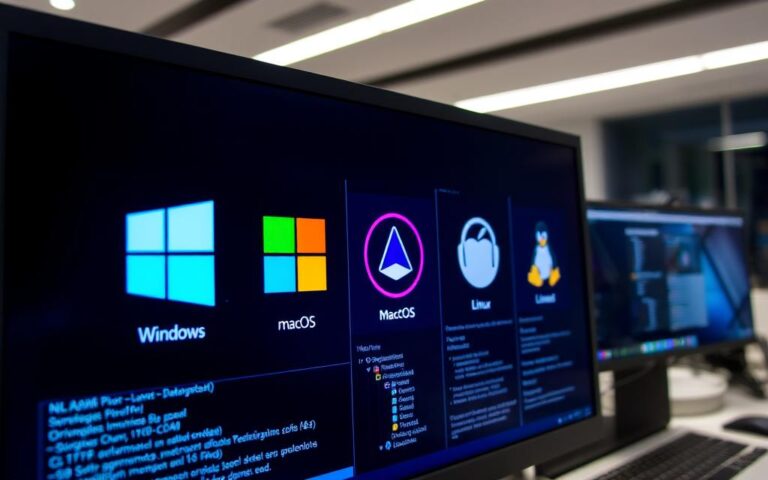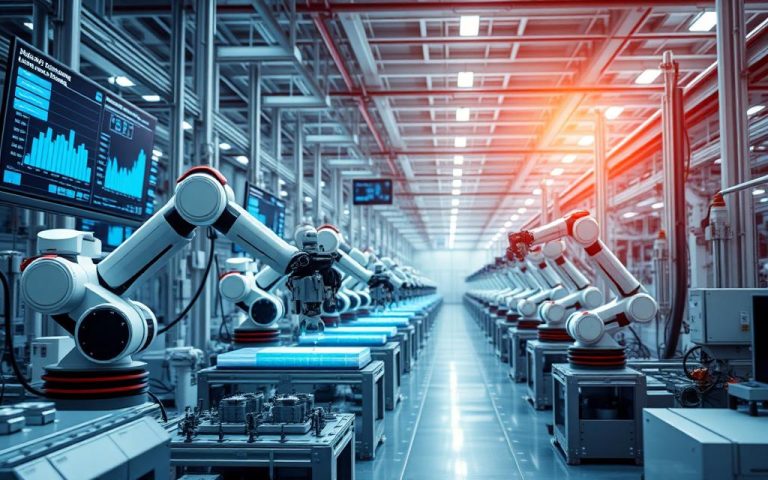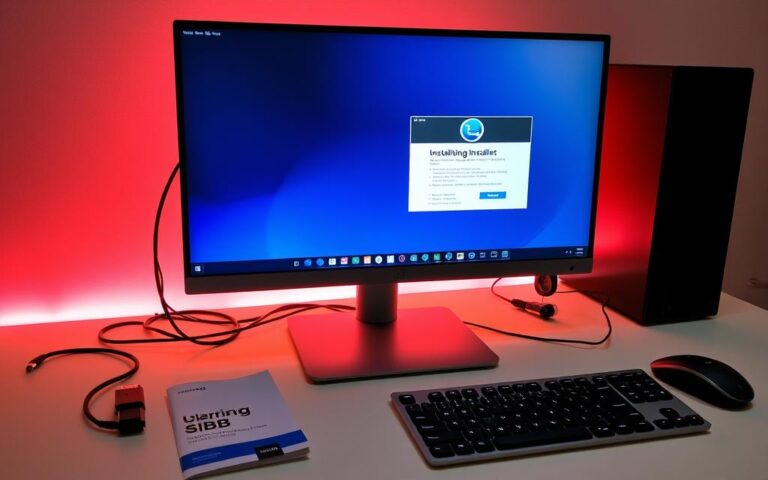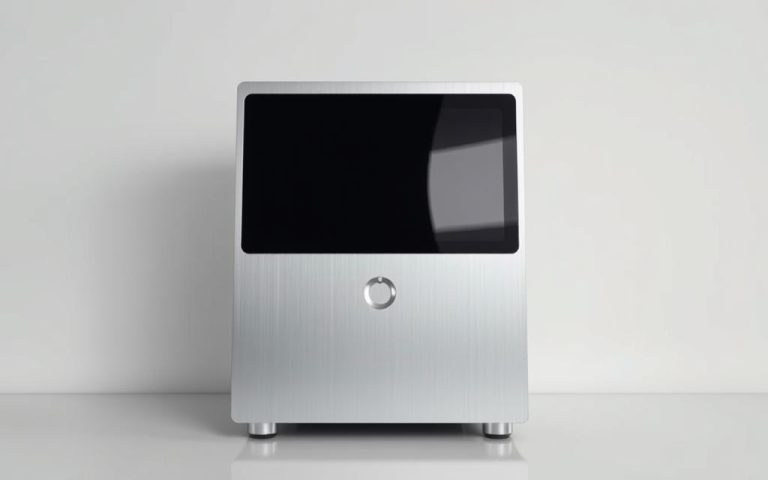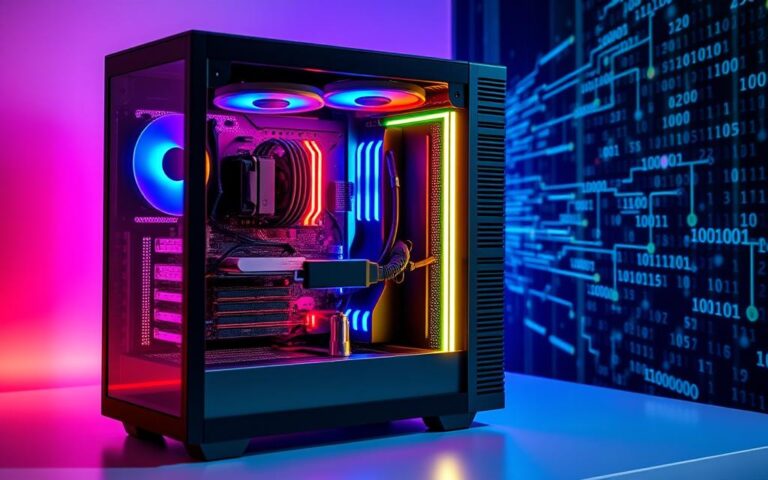Why Do Companies Discard Computer Systems?
Today, companies often change their computer systems. This is because the digital world is always changing. Companies want to be more efficient. So they decide to get rid of old systems that can’t handle new tasks. This leads to considering an IT system upgrade to stay competitive.
Old systems can break down often. This means companies can’t work as they want to. Also, new equipment uses less energy and works better. This helps companies be both better at their work and kinder to the planet. Keeping up with new technology shows they are ready for the future.
The Age of Technology and Obsolescence
Businesses today face a world where technology changes quickly. Understanding these changes is crucial. The pace of innovation can make current IT systems outdated. Each year, firms must update their tech to meet customer needs and stay competitive.
Understanding Technological Advancement
Technological advancement means creating and using new tech to boost efficiency. Firms slow to adapt can fall behind. Most people change their smartphones every two to three years, speeding up obsolescence.
Last year, over 50 million tons of e-waste were produced worldwide. This shows the rapid cycle of technology use and disposal. Unfortunately, only 20% of this e-waste is properly recycled, leaving the rest in dumps.
The Impact of Rapid Innovation
Rapid innovation doesn’t just affect performance; it also shapes IT spending choices. For example, desktop printers only last for about five hours of use. This fact pushes companies to constantly update their technologies.
The European Commission wants devices to be recyclable and fixable. Businesses need to adjust their strategies to fit new rules. The idea of designing products with a limited useful life, started in the 1920s, still affects how companies approach technology.
| Year | Global E-Waste (in millions of tons) | Recycled Percentage |
|---|---|---|
| 2022 | 50 | 20% |
| 2030 (Projected) | – | 80% (EU Target) |
Performance Issues and Maintenance Costs
As technology grows, companies face more and more IT performance issues. Employees using old systems deal with slow boots and lags. These problems make hitting productivity targets tough.
It becomes hard to get good results. This is due to compatibility troubles with new software.
System Slowdowns Affecting Productivity
IT experts say slow systems often mean it’s time for an upgrade. Such slowdowns stop employees from working well. They can’t support their work needs with slow tech.
Companies should weigh how old systems affect work. They need to see the good in updating on time. A thorough check helps decide when to get new hardware.
Increasing Costs of Maintenance for Old Systems
Keeping old computers running gets more expensive over time. It’s hard to find parts for old tech. This frustrates IT teams a lot.
The costs to maintain can be higher than expected. This upsets budget plans. When support ends, it’s time to buy new tech.
Starting an end-of-life policy helps. It guides towards smarter, eco-friendly choices. This cuts down on waste and improves efficiency.
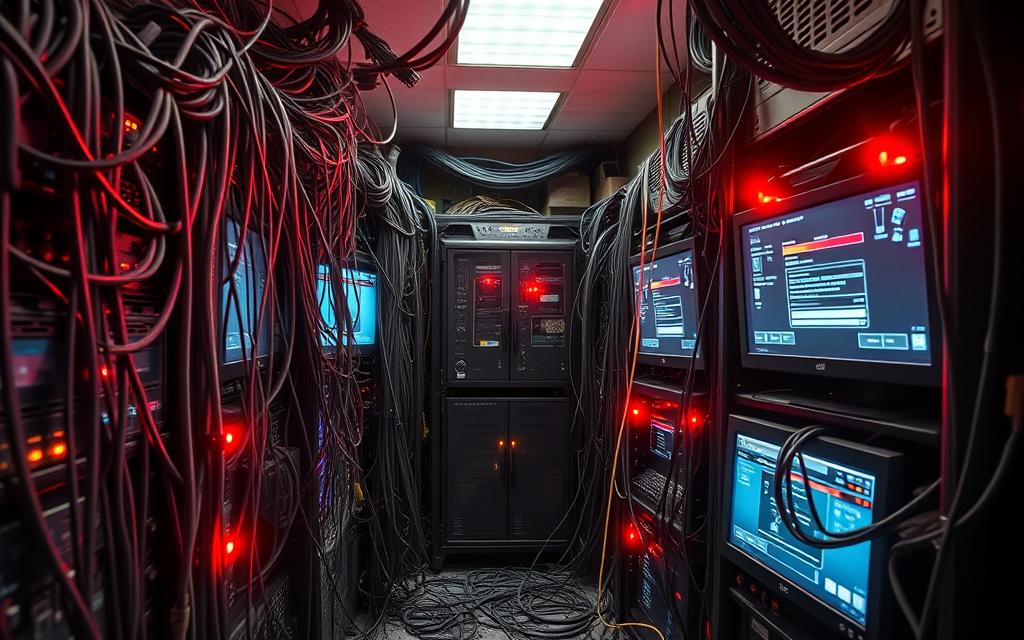
| Issue | Performance Impact | Estimated Maintenance Cost |
|---|---|---|
| Slow Boot Times | High | £200/year |
| Incompatibility with New Software | Medium | £150/year |
| Frequent Repairs | High | £300/year |
| Obsolete Parts Sourcing | High | £250/year |
Understanding these issues helps businesses make smart IT choices. Moving to newer, better systems boosts work and cuts costs.
For more insights on the costs of getting rid of old hardware, see this source.
Support for New Software and Security Updates
Keeping up with tech advancements is crucial. The demand for IT software support has skyrocketed as businesses shift to new platforms. Updating systems is essential. New operating systems offer the latest features and strengthen security against online threats.
Importance of Latest Operating Systems
Adopting the newest operating systems benefits organisations greatly. With improved features and security, these systems protect against data breaches. A survey found 57% of IT partners think the end of Windows 10 support will impact upgrade plans in 2024. Many computers may turn into e-waste, so upgrading is key for companies.
Security Risks Associated with Older Systems
Outdated systems pose big security risks. About 56.25% of bought routers could leak company details. Research shows 22% of devices hold customer information, and 33% could link to external networks. These facts show the dangers of using old technology.
Firms using old tech face data leaks and harm to their reputation. Upgrading systems protects data and meets legal standards. Cybercriminals always look for weak spots. It’s vital for businesses to stay alert and adapt to security challenges.
A Company Discarded a Computer System
When a business decides to get rid of an old computer system, it faces a big job: destroying the data properly. This task is more complex than just erasing files. It requires making sure that sensitive data can’t be found again. Teams might smash hard drives or use special software to wipe data, stopping any data leaks.
The Need for Data Destruction
Firms need strong data destruction plans to reduce the risk of losing data. Overlooking this can lead to big problems. Different industries have strict rules about data, especially with GDPR. Businesses, like Radon Corporation, have to balance costs with the need to wipe data safely. If they don’t, they could face both money loss and harm to their reputation. It’s vital to destroy data carefully and thoughtfully.
Legal Compliance and Data Protection
The rules around keeping data safe are always being watched and must be followed without question. If a company doesn’t comply, it could be fined heavily, say experts like Jane Wilson and Harry Gomes. This means following known data destruction standards is a must. It helps protect both company and client data. As companies grow, knowing about data destruction keeps them within the law and respects their clients, making their operations safer.
FAQ
Why do companies discard computer systems?
Companies get rid of computer systems for many reasons. Old hardware falls apart easier, system failures happen more often, and upgrading is key to stay competitive.
What factors contribute to the obsolescence of IT systems?
IT systems age quickly because technology moves fast. This can cause glitches and prevents new software from working well. Keeping systems up-to-date is crucial to use the latest features.
How do performance issues impact employee productivity?
When computers are slow to start or respond, it’s hard for workers to do their jobs well. This can make them feel frustrated and less productive every day.
What are the maintenance costs associated with old systems?
Looking after old systems can be very expensive. It’s harder to find parts for old tech, and it costs a lot more than getting new systems.
Why is it important to adopt the latest operating systems?
The latest operating systems provide better features and security. This helps protect important data and stops the risk of data thefts, keeping companies safe.
What security risks do outdated systems pose?
Old systems are easy targets for hackers because they lack recent security updates. This can lead to serious data leaks, costing companies a lot of money and harm to their reputation.
What is involved in data destruction when a computer system is discarded?
Getting rid of data properly involves more than just deleting it. It means making sure the data can’t be found again, either by physically destroying the hard drive or by wiping the data securely.
How must companies ensure compliance with data protection regulations?
Companies need to follow strict data destruction rules, especially with laws like GDPR. This stops them from facing big fines or legal troubles while protecting both business and personal data.

